Are you ready to skyrocket your blog's visibility? In this post, we'll explore powerful ghost SEO hacks that can elevate your website's traffic and search rankings. Let's dive into the secrets that can transform your blogging journey!
🕵️♂️ Introduction to Secret SEO Hacks for Ghost Blogging
Welcome to the world of ghost blogging, where the right SEO strategies can turn your content into a magnet for traffic. Many bloggers overlook key aspects that can significantly impact their search engine visibility. Here, we’ll unveil some essential ghost SEO hacks that can help you optimize your blog efficiently.
Understanding these hacks is crucial for anyone looking to enhance their blog's performance. It’s not just about writing great content; it’s about ensuring that content is discoverable. Let’s explore these powerful strategies that can give your blog the boost it needs.
🔍 Optimizing Site-Wide Metadata
The first step in your ghost SEO journey is optimizing your site-wide metadata. This is often the first thing that search engines like Google look at when crawling your site.
Navigate to your Ghost settings and scroll down to the metadata section. Here, you’ll want to fill in your site title and description. Aim for a site title of under 70 characters and a meta description of about 156 characters. These elements need to reflect your blog's focus and include relevant keywords. A well-crafted metadata can improve your site's authority and relevance in search results.

✨ Enhancing Individual Blog Post Metadata
After optimizing your site-wide metadata, it’s time to focus on individual blog posts. Each post should have its own unique metadata that complements the overall site metadata.
Within each blog post, access the metadata section and customize your meta title and description. Remember, the meta title should be catchy and relevant, ideally under 60 characters, while the meta description should entice users to click, keeping it concise at around 160 characters. This is your chance to treat it like an advertisement—make it appealing!
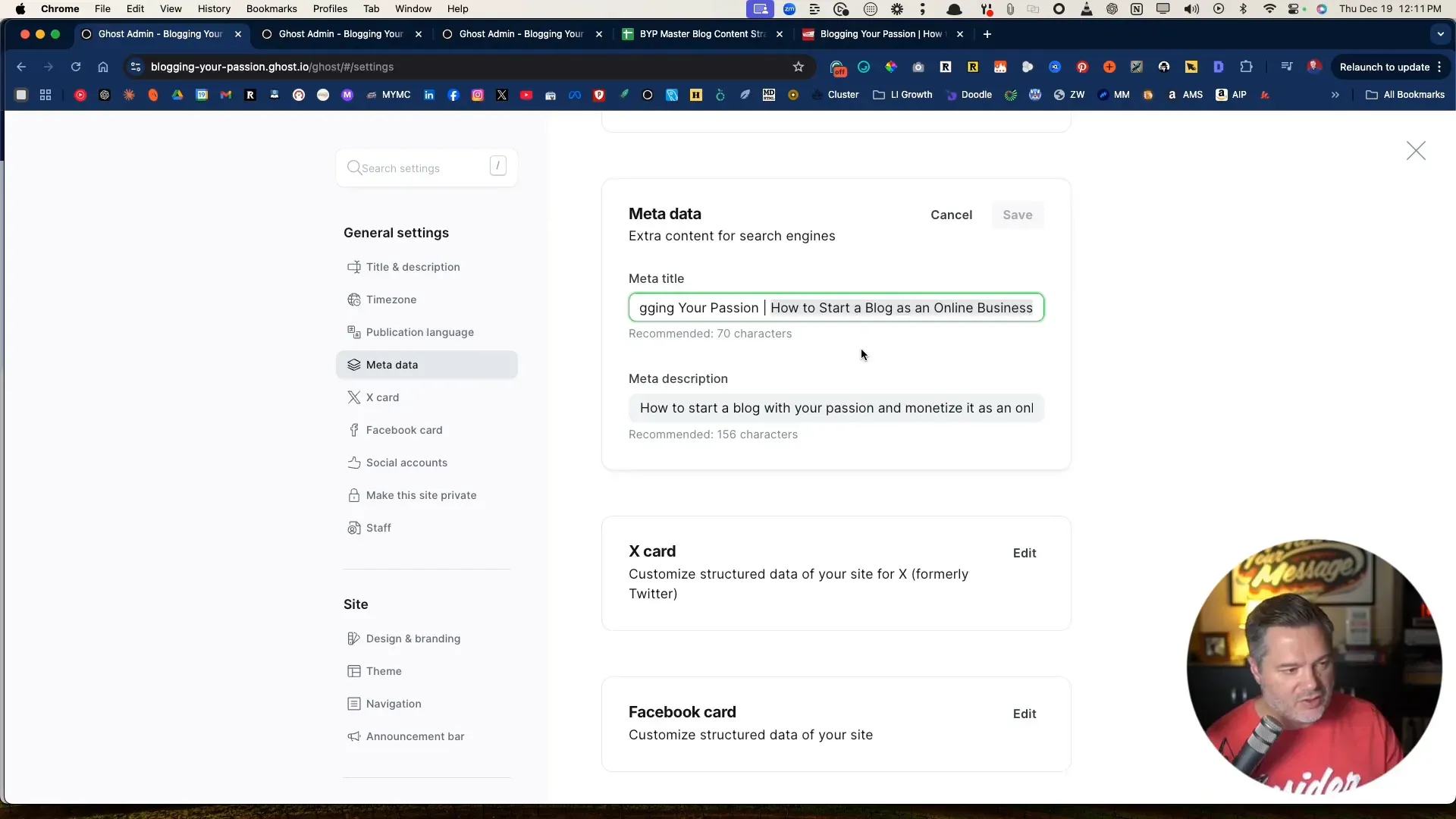
🔗 Crafting Effective Post URLs
Your blog post URLs should be clear, concise, and descriptive. Ghost generates these URLs based on your post title by default, which can often result in overly long and unwieldy URLs.
For best practices, aim to keep URLs under five words. Remove unnecessary words, numbers, and dates to ensure they remain clean and relevant. For example, instead of “my-12-income-streams-writer-teacher-co,” consider simply “income-streams” or “income-streams-coach.” This not only enhances readability but also improves SEO.
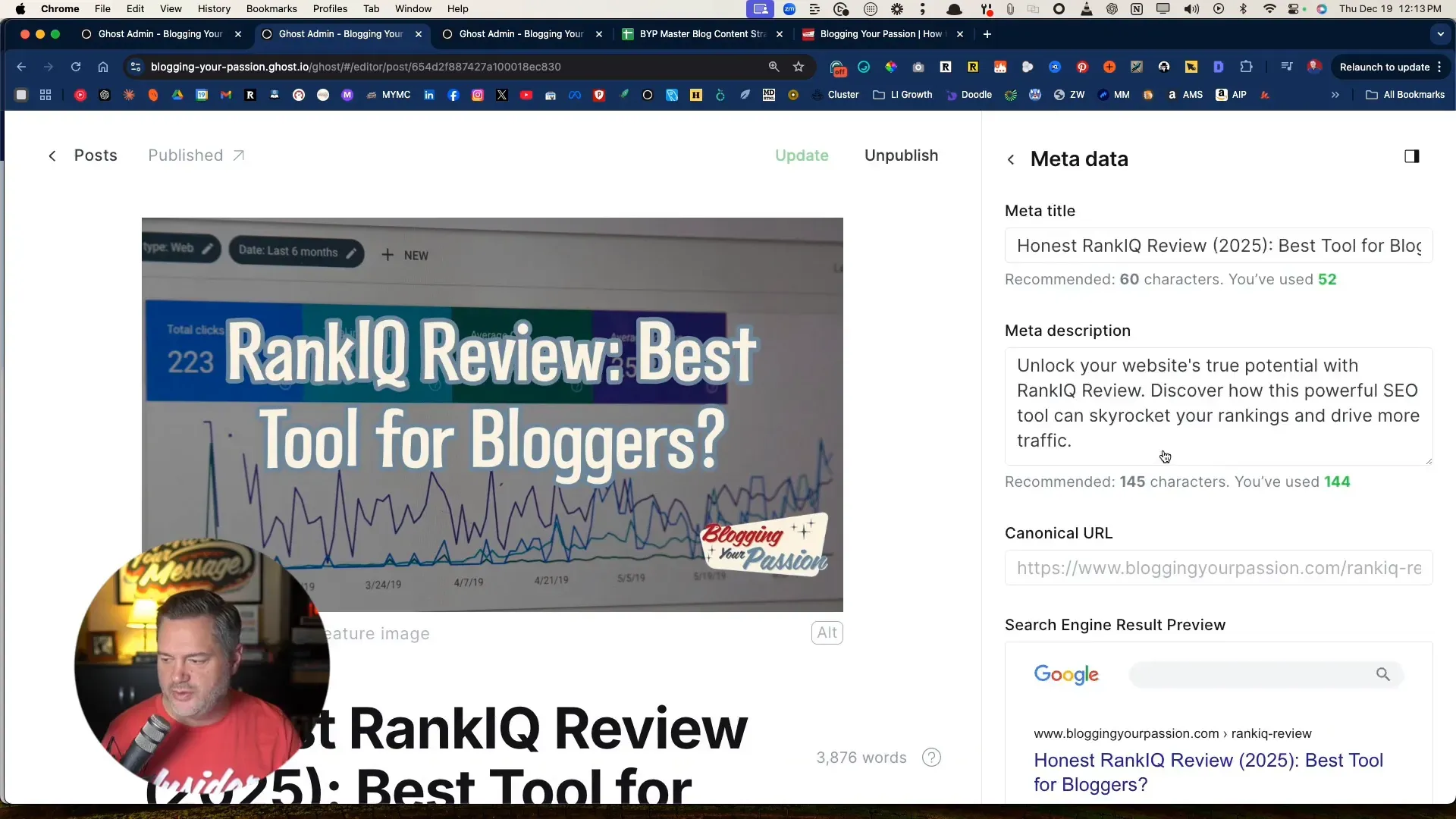
🔄 Understanding Canonical URLs
Canonical URLs are vital in preventing duplicate content issues. They tell search engines which version of a page is the original. By default, Ghost sets this up, but it's important to check.
In the metadata section of each post, ensure the canonical URL is set to the post's URL. This helps consolidate link equity and ensures that search engines recognize your original content, boosting your SEO efforts.
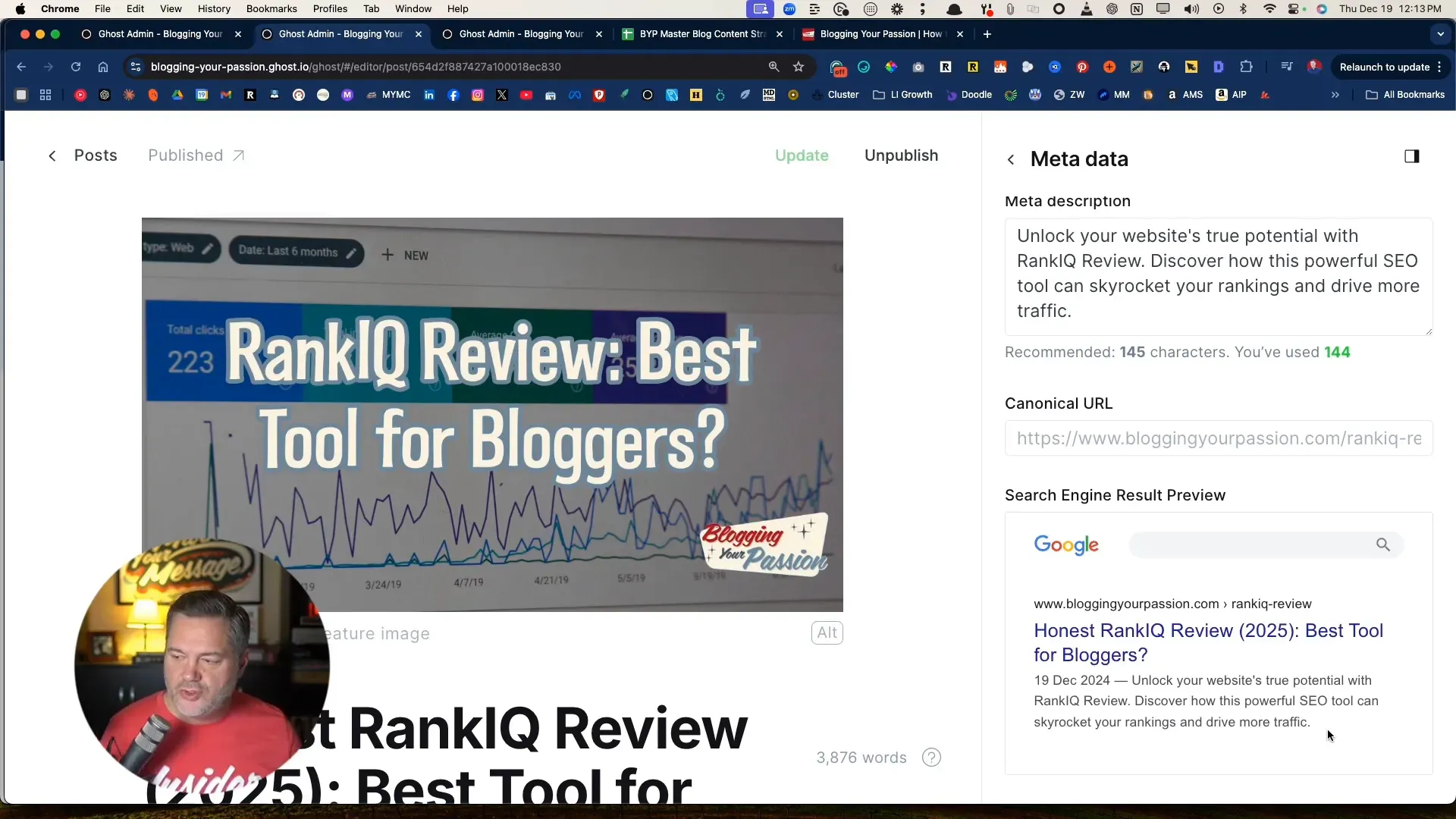
🚫 Common Mistakes to Avoid
While implementing these ghost SEO hacks, there are common pitfalls you should avoid. One major mistake is neglecting metadata. Leaving site-wide or individual post metadata blank can severely limit your site's visibility.
Another mistake involves not optimizing URLs. Long and complex URLs can confuse both users and search engines. Always prioritize clarity and brevity.
Finally, don’t overlook the importance of interlinking. Linking related posts within your content can enhance user experience and improve your site's SEO by establishing a clear structure.
📊 Advanced Strategies: Using Content Clusters
For those looking to take their SEO to the next level, consider implementing content clusters. This strategy involves creating a central pillar post surrounded by related articles that link back to it. This not only organizes your content but also enhances topical authority.
Inside Ghost, you can create internal tags for your clusters. Use a unique hashtag for each cluster, allowing you to manage and interlink your content effectively. This organization will help search engines understand the relationship between your posts, boosting your overall ranking.
📈 Bonus Tips for Ghost SEO Success
As you implement these ghost SEO hacks, keep these bonus tips in mind:
- Regularly Update Content: Fresh content signals to search engines that your blog is active and relevant.
- Utilize Social Media: Promote your posts on social media platforms to drive traffic and backlinks.
- Monitor Analytics: Use tools like Google Analytics to track your traffic and understand which strategies are working best.
By following these guidelines and leveraging the power of ghost SEO hacks, you’re setting your blog up for success. Your journey to becoming a recognized authority in your niche starts now!
🏗️ Best Practices for URL Structure
Crafting a clean and effective URL structure is essential for optimizing your blog. URLs should be straightforward, descriptive, and easy to read. Aim for brevity while ensuring that they convey the essence of the content.
Here are some best practices to follow:
- Keep It Short: Aim for URLs that are under five words. Remove unnecessary words, numbers, and dates.
- Descriptive Keywords: Include relevant keywords that represent the content accurately.
- Consistency: Maintain a consistent format across your blog to enhance user experience.
For example, instead of using a long URL like “my-12-income-streams-writer-teacher-co,” simplify it to “income-streams” or “income-streams-coach.” This not only improves readability but also boosts SEO performance.
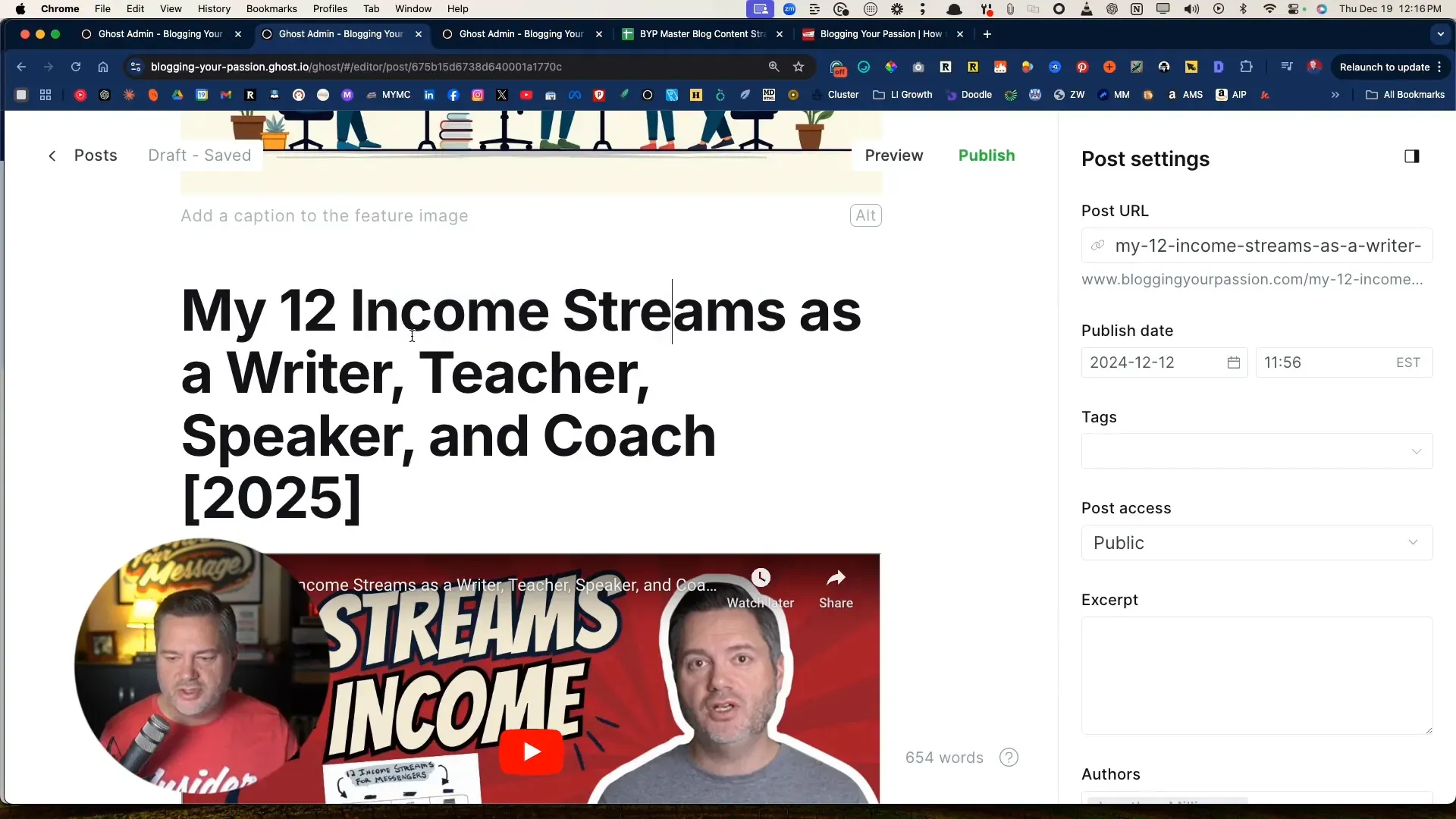
💪 The Power of SEO Clusters
SEO clusters are a game-changer for establishing topical authority. By creating a central pillar post and surrounding it with related articles, you can interlink content effectively, enhancing both user experience and search engine rankings.
Here’s how to implement SEO clusters:
- Identify Pillar Topics: Select main topics that represent the core of your blog.
- Create Related Content: Develop supporting articles that delve deeper into subtopics related to your pillar posts.
- Interlink Strategically: Link these articles back to the pillar post and to each other to establish a cohesive content network.
This strategy not only helps search engines understand your content better but also keeps readers engaged by providing a logical flow of information.

🗂️ Setting Up Internal Tags for Organization
Using internal tags is a smart way to keep your content organized and easily navigable. By categorizing posts with unique internal tags, you can streamline the process of linking related articles together.
Here’s how to set up internal tags effectively:
- Use Hashtags: Create internal tags using hashtags. This prevents them from appearing publicly on your blog while keeping your content organized.
- Tag Related Content: When writing a new post, tag it with the relevant internal tags to link it to other articles in the same cluster.
- Maintain Clarity: Keep your tagging system clear and consistent to avoid confusion.
For instance, if your cluster focuses on “how to start a blog,” use an internal tag like #startablog to group related posts. This organization aids in boosting the rankings of your primary topics.
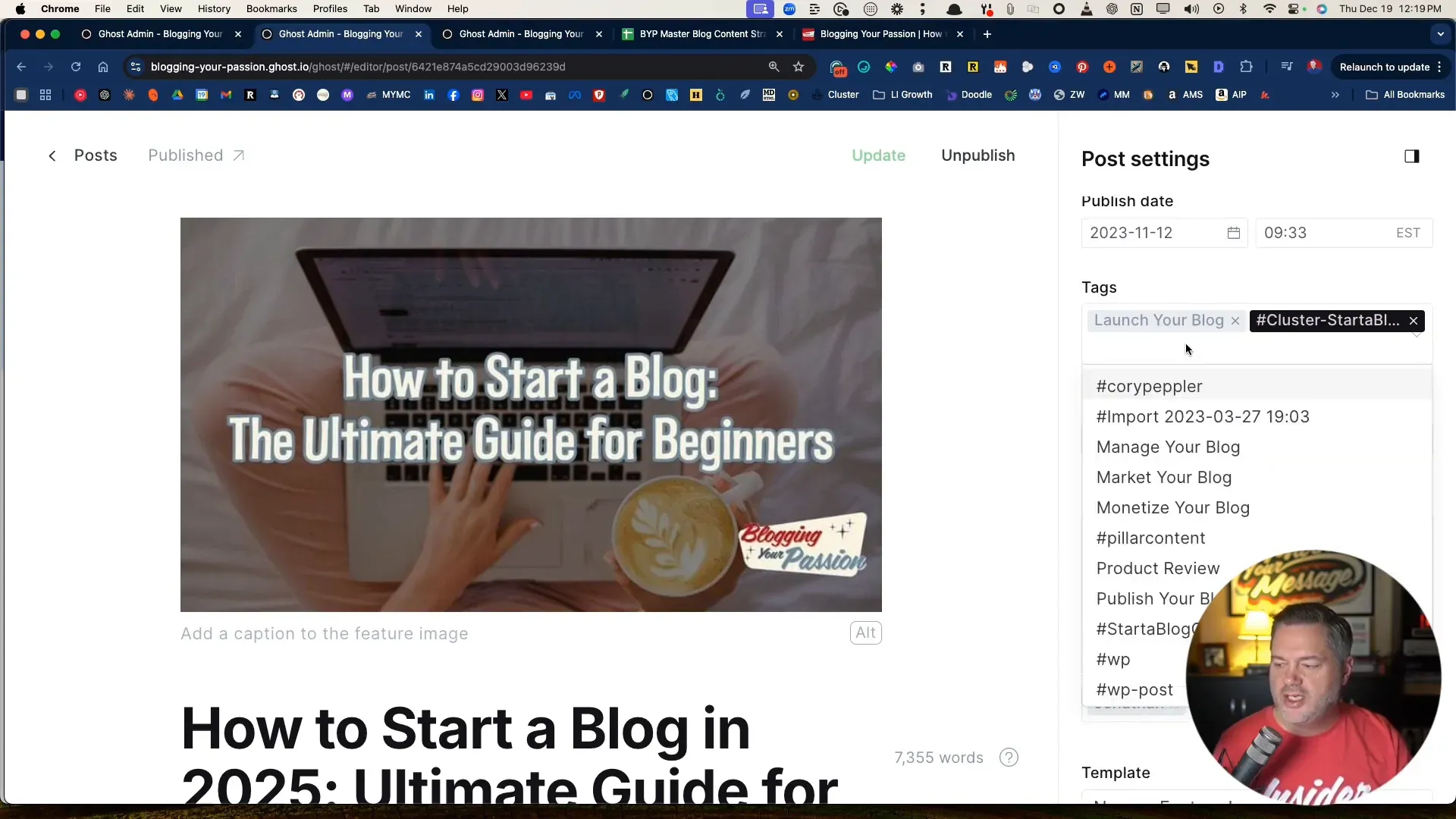
📚 Leveraging Topical Authority
Establishing topical authority is crucial for ranking well in search engines. When you consistently publish high-quality content around specific subjects, you signal to search engines that you are an expert in those areas.
To leverage topical authority:
- Focus on Niche Topics: Concentrate your efforts on a specific niche to become a go-to resource.
- Update Content Regularly: Keep your existing posts fresh with updates and new information to maintain relevance.
- Engage with Your Audience: Encourage comments and feedback to foster a community around your niche.
By implementing these strategies, you’ll not only improve your blog’s visibility but also build trust and authority in your niche. This is one of the key ghost SEO hacks that can lead to long-term success.
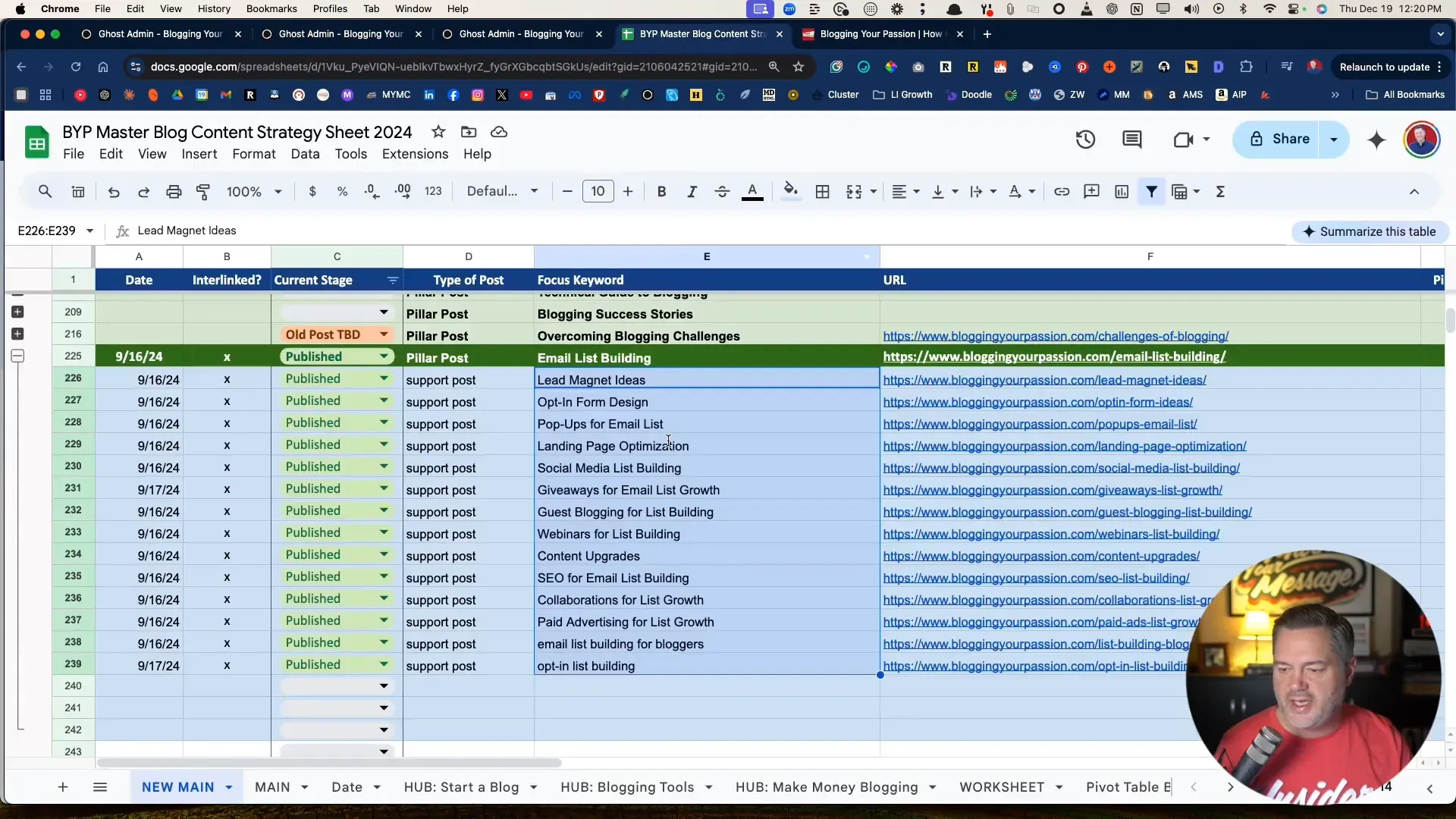
🔚 Conclusion and Additional Resources
In conclusion, mastering these ghost SEO hacks can transform your blog’s performance. From optimizing URLs to establishing topical authority, each strategy plays a vital role in enhancing your visibility and traffic.
Here’s a quick recap of what we covered:
- Best practices for URL structure
- The power of SEO clusters
- Setting up internal tags for organization
- Leveraging topical authority
For further learning, check out additional resources available on our website. Stay updated with the latest trends and techniques to continue growing your blog. Happy blogging!
Absolutely! Here’s a clean and helpful FAQ section based on your blog post, designed to reinforce the key points and answer common reader questions:
❓ Frequently Asked Questions (FAQ)
1. What is Ghost, and why is it good for SEO?
Ghost is a modern, open-source publishing platform designed for speed, simplicity, and great SEO performance out of the box. Its clean codebase and built-in SEO features like metadata management and canonical URLs make it a solid choice for bloggers focused on content and visibility.
2. How do I optimize my Ghost blog’s metadata?
Go to your Ghost settings and fill in the site-wide metadata, including a concise site title and meta description with relevant keywords. Then, optimize each individual post’s meta title and description—think of them like a mini ad for your content. Keep them catchy, relevant, and within the ideal character limits.
3. Why are short and clean URLs important?
Search engines prefer URLs that are easy to read and keyword-rich. Shorter URLs are also easier for users to remember and share. Instead of long, cluttered URLs, keep them under five words and remove unnecessary elements like dates or filler words.
4. What is a canonical URL, and why does it matter?
A canonical URL tells search engines which version of a page is the original, helping to prevent duplicate content issues. In Ghost, make sure the canonical URL matches your post’s actual URL to consolidate SEO authority and improve rankings.
5. What are common SEO mistakes to avoid on Ghost?
Some key mistakes include:
Leaving metadata fields blank
Using long, messy URLs
Not interlinking related posts
Avoiding these pitfalls can dramatically improve your blog’s search visibility and user experience.
6. What are SEO clusters and how do I use them?
SEO clusters involve creating a pillar post around a central topic and linking it to related supporting posts. This helps search engines understand your blog structure and builds topical authority. Use internal tags (like #startablog) to group related content for easy linking.
7. How do internal tags work in Ghost?
Internal tags are hashtags used for internal organization only—they don’t appear on the public site. You can use them to group related posts into clusters, making it easier to manage and interlink content for better SEO structure.
8. What is topical authority and how do I build it?
Topical authority is when your blog becomes known as an expert source on a specific subject. Build it by:
Focusing on niche topics
Publishing consistently
Updating old content regularly
Engaging your readers through comments and social channels
9. How can I track if my SEO strategies are working?
Use tools like Google Analytics and Google Search Console to monitor your traffic, track keyword performance, and identify top-performing content. Regularly check these metrics to refine your SEO approach.
10. Do I need to use plugins or code for Ghost SEO?
Ghost is built with SEO in mind, so you don’t need many plugins. Most optimizations—like metadata, canonical URLs, and clean URLs—are built-in or can be done directly from the Ghost editor or settings.
Let me know if you’d like to turn this into a styled collapsible FAQ section for a Ghost blog or website!

